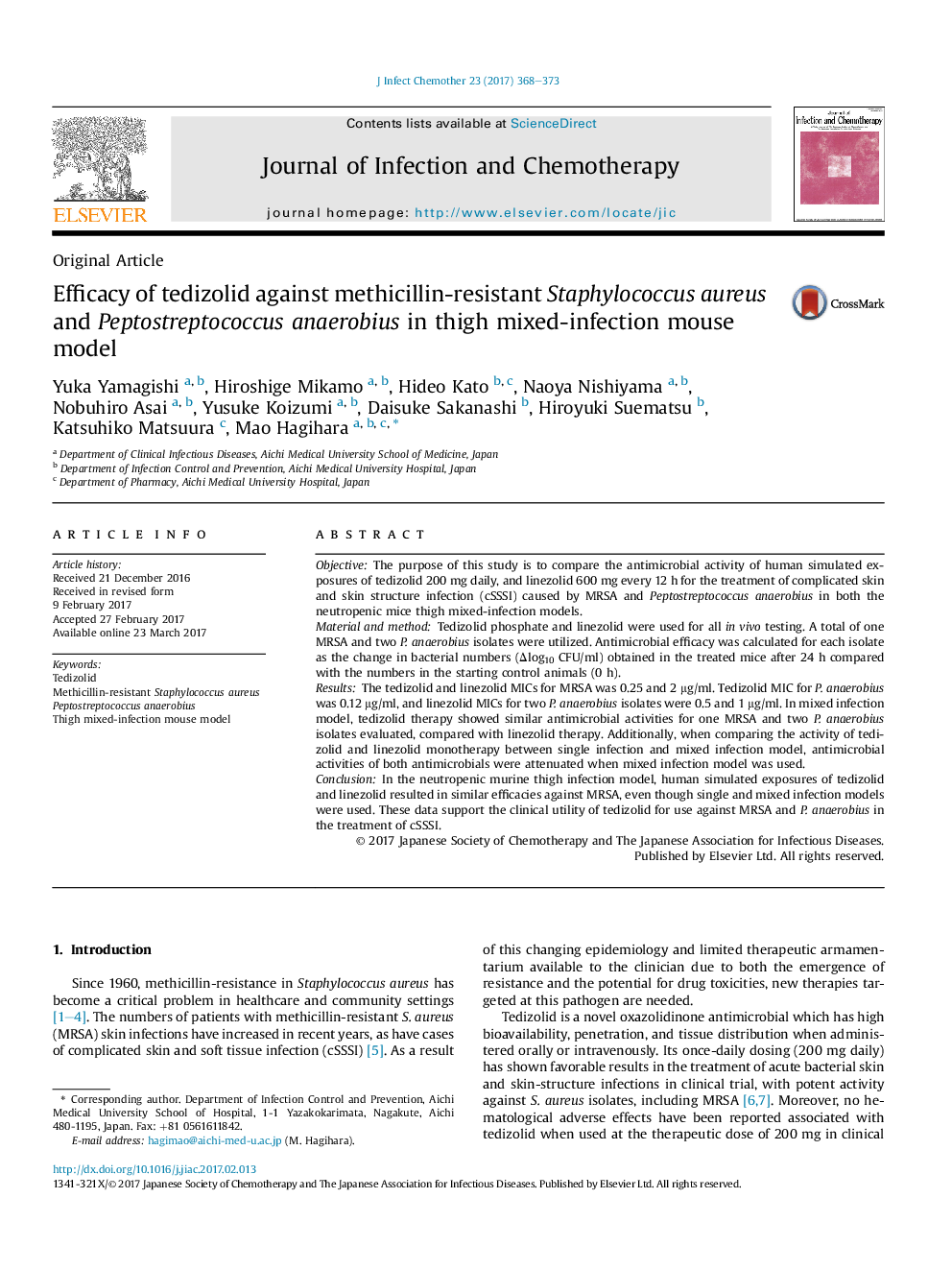| Article ID | Journal | Published Year | Pages | File Type |
|---|---|---|---|---|
| 5668920 | Journal of Infection and Chemotherapy | 2017 | 6 Pages |
ObjectiveThe purpose of this study is to compare the antimicrobial activity of human simulated exposures of tedizolid 200 mg daily, and linezolid 600 mg every 12 h for the treatment of complicated skin and skin structure infection (cSSSI) caused by MRSA and Peptostreptococcus anaerobius in both the neutropenic mice thigh mixed-infection models.Material and methodTedizolid phosphate and linezolid were used for all in vivo testing. A total of one MRSA and two P. anaerobius isolates were utilized. Antimicrobial efficacy was calculated for each isolate as the change in bacterial numbers (Îlog10 CFU/ml) obtained in the treated mice after 24 h compared with the numbers in the starting control animals (0 h).ResultsThe tedizolid and linezolid MICs for MRSA was 0.25 and 2 μg/ml. Tedizolid MIC for P. anaerobius was 0.12 μg/ml, and linezolid MICs for two P. anaerobius isolates were 0.5 and 1 μg/ml. In mixed infection model, tedizolid therapy showed similar antimicrobial activities for one MRSA and two P. anaerobius isolates evaluated, compared with linezolid therapy. Additionally, when comparing the activity of tedizolid and linezolid monotherapy between single infection and mixed infection model, antimicrobial activities of both antimicrobials were attenuated when mixed infection model was used.ConclusionIn the neutropenic murine thigh infection model, human simulated exposures of tedizolid and linezolid resulted in similar efficacies against MRSA, even though single and mixed infection models were used. These data support the clinical utility of tedizolid for use against MRSA and P. anaerobius in the treatment of cSSSI.
